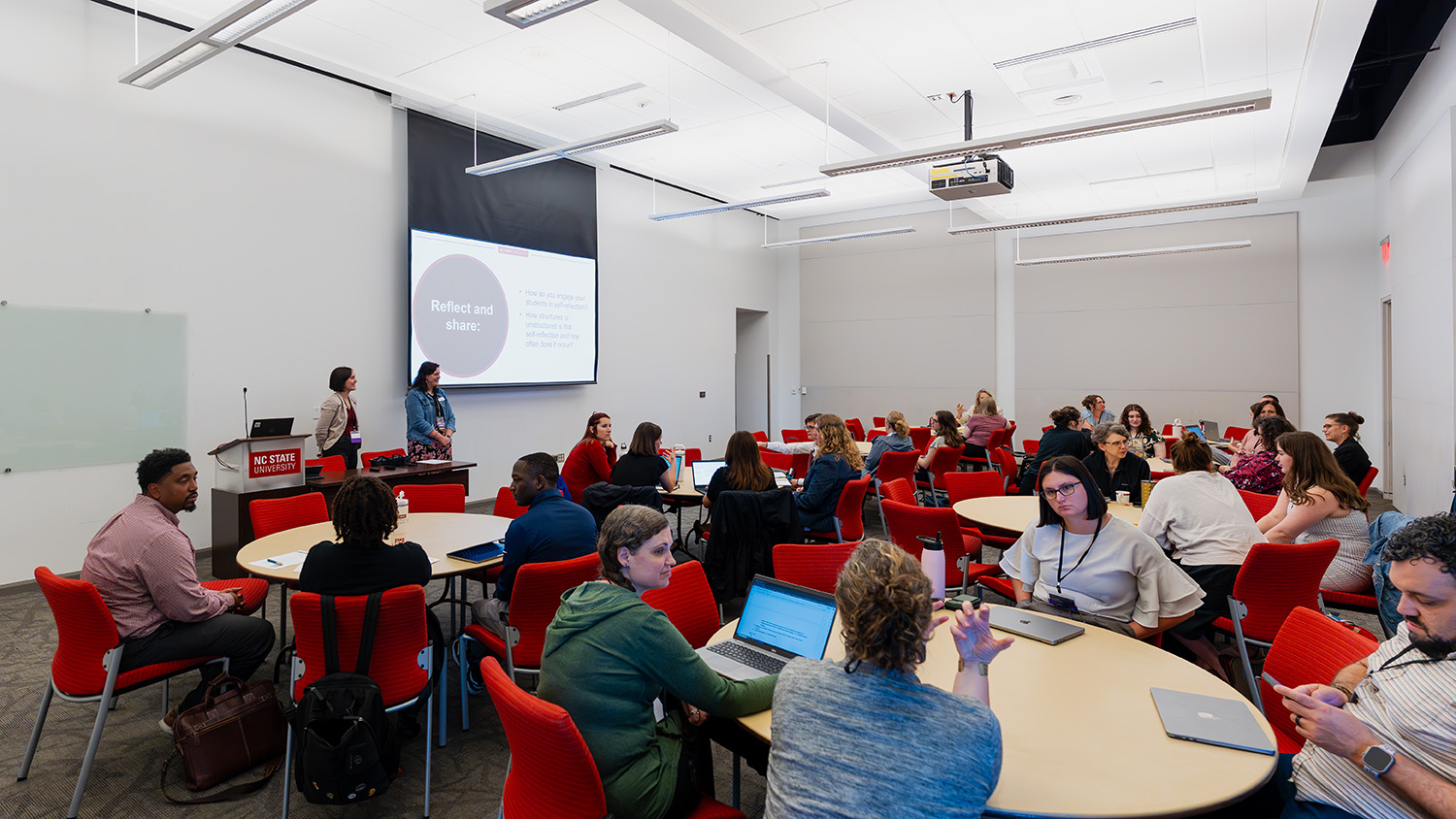In his role as Teaching Assistant Professor of Information Technology and Business Analytics at the Poole College of Management, Neal Parker is passionate about equipping students to navigate the crossroads of business and IT. Whether he is in front of a class or behind a game console, he brings a dedication to learning and a deep care for people to his work.
Q&A with Neal Parker
What initially sparked your interest in computers and IT systems?
Back before Windows came onto the scene, I taught myself programming using Microsoft Basic. From there, it was a natural transition for me to study engineering and business. The intersection between money and computers has always intrigued me. For example, after the Great Recession, we found that video games were a recession-resistant product because of their repeatable and immersive characteristics. Video games don’t compete with other temporary forms of entertainment like movies and TV shows that you watch maybe once or twice. By releasing new content, video game developers and artists can build profits even during a recession. Most of my current research focuses on the crossroads between financial analysis and technological innovation.
What is most rewarding about applying your interests in a teaching context at Poole?
I can’t think of a better job than learning something new and sharing it with others in a classroom context. Many students come into IT or analytics classes with a tremendous amount of fear and trepidation. But after we’ve gone through the material together, they realize it isn’t that scary after all. I get to watch my students make that transition from anxiety to having fun with the content, and that is very fulfilling to me as both an educator and an IT professional.
My colleagues are also some of the best and the brightest minds in their field. We put our heads down and accomplish great things together. I like to think of it through the lens of network externalities, which means that the value of something increases with the number of users. As we add more and more capable people to our community, our work becomes exponentially more impactful.
How would you describe your teaching philosophy?
Throughout my 15 years of teaching at various universities, I have always told my students not to worry about mathematical proofs or textbook definitions until we can understand why what we’re doing is important. After establishing a practical application, I help them work backwards to solve the problem. I’ve found that people are more than willing to attempt the journey with me if they know the destination.
What advice would you give students who want to pursue a career in IT?
First, you must be a people person. There’s a stereotype that IT people sit in a dark basement surrounded by boxes that blink at them. That couldn’t be further from the truth. We don’t just work with software and systems. IT is a highly relational profession. To be able to solve somebody’s problem, you must be able to empathize with them and listen to their stories. You really have to care about people in order to step in and help them. That’s where it starts.
On a similar note, people are endlessly creative, and they are endlessly creative at creating problems. As an IT professional, you have to be better at solving problems than others are at creating those problems.
Finally, you should be the kind of person that gets bored easily. If you want to do the same thing day after day, this is not the profession for you. You’re not going to be happy. But if you want to go from one crisis to the next, learn something new every day, and constantly try to better those around you, IT will be a very good fit.
How do you typically spend your time outside the classroom?
I’m a gamer. Throughout the years, I’ve conducted game research, consulted for the gaming industry, designed games and helped companies discern how to make their games more profitable. It all goes back to my interest in how technology and finance interact.
In my office at home, I have a rug featuring the original 8-Bit Mario that was woven by a Navajo master weaver named Venancio Aragon. That was one of the first games that I really tried to take apart to learn the hidden mechanics. Now, I apply that curiosity to online multiplayer games. When the game is very small, the server is sparsely populated. But to go back to the idea of network externalities, as more and more people join, the value of the experience starts creeping up slowly and eventually at an exponential rate. You’ll start seeing groups form, and those groups form new groups. Suddenly, each server starts creating norms and behaviors. It’s like watching a little compressed view of human societal evolution. I find that absolutely fascinating.
- Categories:



